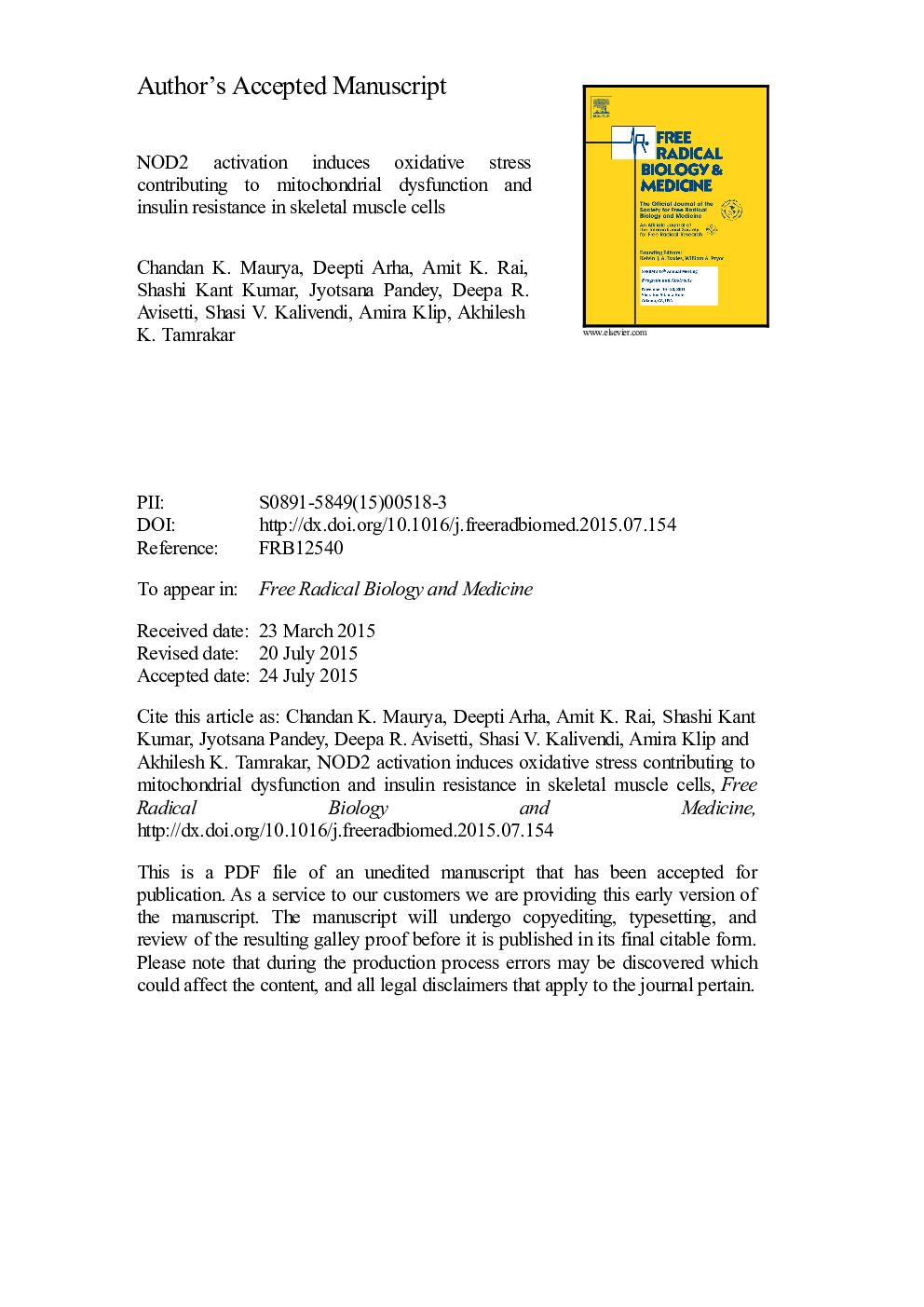| Article ID | Journal | Published Year | Pages | File Type |
|---|---|---|---|---|
| 8268426 | Free Radical Biology and Medicine | 2015 | 25 Pages |
Abstract
Nucleotide-binding oligomerization domain protein-2 (NOD2) activation in skeletal muscle cells has been associated with insulin resistance, but the underlying mechanisms are not yet clear. Here we demonstrate the implication of oxidative stress in the development of mitochondrial dysfunction and insulin resistance in response to NOD2 activation in skeletal muscle cells. Treatment with the selective NOD2 ligand muramyl dipeptide (MDP) increased mitochondrial reactive oxygen species (ROS) generation in L6 myotubes. MDP-induced ROS production was associated with increased levels of protein carbonyls and reduction in citrate synthase activity, cellular ATP level, and mitochondrial membrane potential, as well as altered expression of genes involved in mitochondrial function and metabolism. Antioxidant treatment attenuated MDP-induced ROS production and restored mitochondrial functions. In addition, the presence of antioxidant prevented NOD2-mediated activation of MAPK kinases and the inflammatory response. This was associated with reduced serine phosphorylation of insulin receptor substrate-1 (IRS-1) and improved insulin-stimulated tyrosine phosphorylation of IRS-1 and downstream activation of Akt phosphorylation. These data indicate that oxidative stress plays a role in NOD2 activation-induced inflammatory response and that MDP-induced oxidative stress correlates with impairment of mitochondrial functions and induction of insulin resistance in skeletal muscle cells.
Keywords
DPIMDPNODOCRmuramyl dipeptideTMBNACDCF-DAIRS-1PRR2′,7′-dichlorofluorescin diacetate3,3′,5,5′-tetramethylbenzidineN-acetylcysteineROSinflammationinsulin receptor substrate-1Innate immunitydiphenyliodoniumFree radicalsMitochondrial functionInsulin resistanceOxygen consumption ratesReactive oxygen speciespattern recognition receptor
Related Topics
Life Sciences
Biochemistry, Genetics and Molecular Biology
Ageing
Authors
Chandan K. Maurya, Deepti Arha, Amit K. Rai, Shashi Kant Kumar, Jyotsana Pandey, Deepa R. Avisetti, Shasi V. Kalivendi, Amira Klip, Akhilesh K. Tamrakar,
